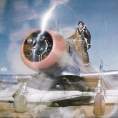-
Posts
3,551 -
Joined
-
Last visited
-
Days Won
22


GeeBee replied to Ed de C.'s topic in Modern Mooney Discussion

GeeBee replied to Ed de C.'s topic in Modern Mooney Discussion

GeeBee replied to EricShr's topic in Ovation Owners

GeeBee replied to Max Clark's topic in Modern Mooney Discussion

GeeBee replied to Max Clark's topic in Modern Mooney Discussion

GeeBee replied to Max Clark's topic in Modern Mooney Discussion

GeeBee replied to Max Clark's topic in Modern Mooney Discussion

GeeBee replied to Max Clark's topic in Modern Mooney Discussion

GeeBee replied to Max Clark's topic in Modern Mooney Discussion

GeeBee replied to Max Clark's topic in Modern Mooney Discussion

GeeBee replied to Max Clark's topic in Modern Mooney Discussion

GeeBee replied to Max Clark's topic in Modern Mooney Discussion

GeeBee replied to Max Clark's topic in Modern Mooney Discussion

GeeBee replied to Max Clark's topic in Modern Mooney Discussion

GeeBee replied to Max Clark's topic in Modern Mooney Discussion

GeeBee replied to PprophetBirdman's topic in Miscellaneous Aviation Talk

GeeBee replied to Mooneymite's topic in General Mooney Talk

GeeBee replied to PprophetBirdman's topic in Miscellaneous Aviation Talk

GeeBee replied to GeneralT001's topic in General Mooney Talk
We have placed cookies on your device to help make this website better. You can adjust your cookie settings, otherwise we'll assume you're okay to continue.